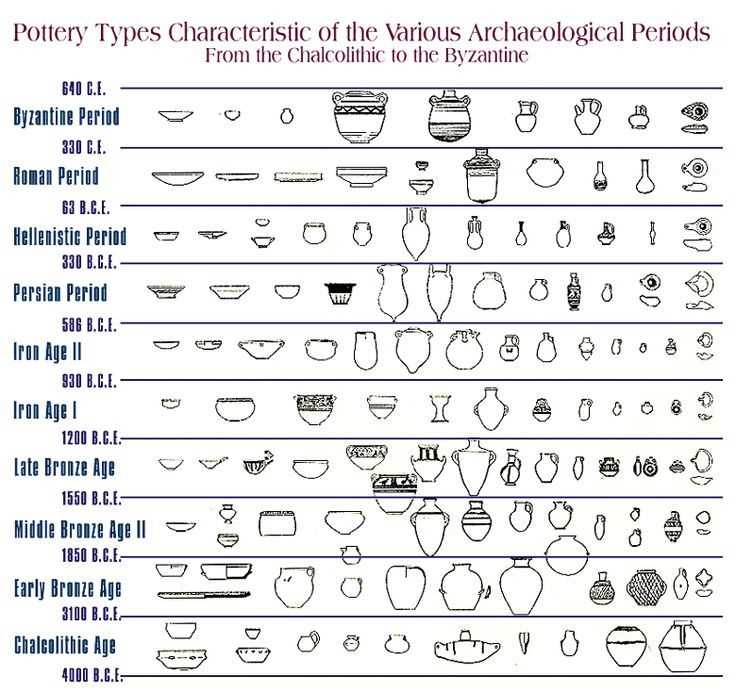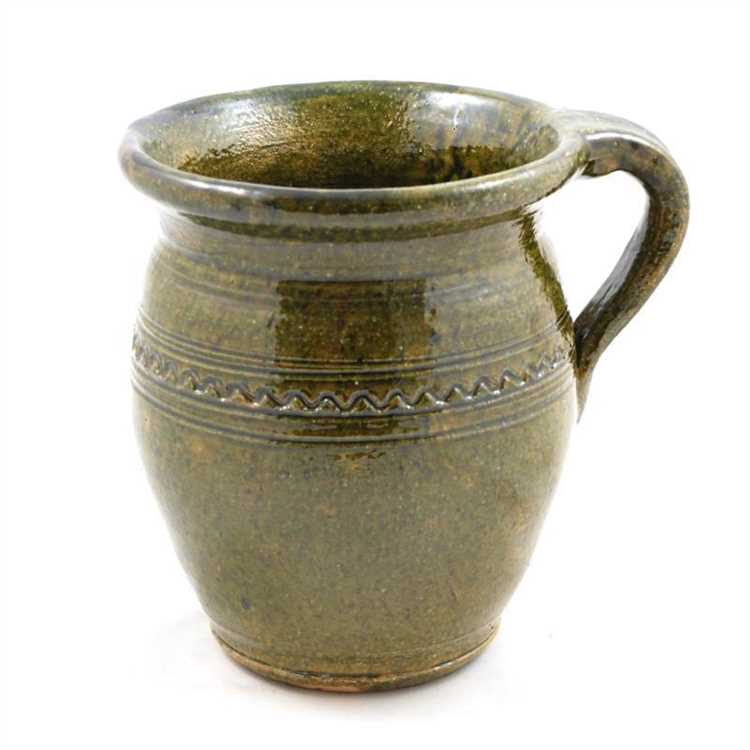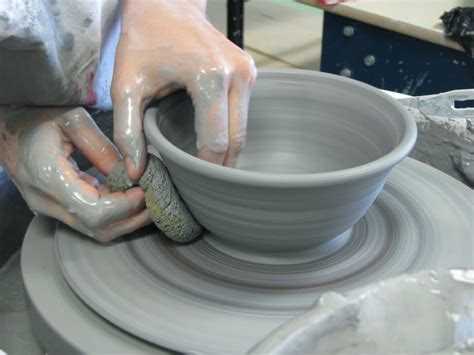Pottery is an ancient art form that has been practiced for thousands of years. From functional vessels to intricate sculptures, pottery has been used for both practical and artistic purposes. In this article, we will explore five stunning examples of pottery from around the world, showcasing the diverse techniques and styles that have emerged throughout history.
One of the most iconic examples of pottery is the Chinese blue and white porcelain. Dating back to the 14th century, this style is characterized by its delicate white porcelain decorated with intricate blue patterns. It is known for its elegance and sophistication, and has been highly sought after by collectors and connoisseurs.
Another stunning example of pottery is the Greek black-figure pottery. Originating in ancient Greece around the 7th century BC, this style is characterized by its black figures painted on a red clay background. The details and expressions depicted on these vases are truly remarkable, showcasing the skill and artistry of the ancient Greeks.
Moving towards the Americas, we find the intricate pottery of the Native American Pueblo people. Known for their intricate designs and vibrant colors, Pueblo pottery has a rich history and cultural significance. Each piece tells a story and reflects the connection between the artist and their ancestors, making it a truly unique and stunning example of pottery.
Continuing our exploration, we come across the delicate celadon pottery from Korea. This style is characterized by its beautiful green glaze and simple yet elegant forms. Celadon pottery is highly valued for its craftsmanship and attention to detail, making it a popular choice among collectors and art enthusiasts.
Finally, we cannot overlook the stunning pottery of the ancient Egyptians. From elaborate funerary vessels to small decorative figurines, Egyptian pottery showcases the intricate artistry and symbolism of the ancient civilization. The use of hieroglyphics and vibrant colors adds an extra layer of beauty and mystique to these ancient artifacts.
In conclusion, pottery is a truly fascinating art form that has captivated people around the world for centuries. These five stunning examples from different cultures and time periods demonstrate the depth and beauty of pottery, showcasing the skill and creativity of the artists behind them. So, take a journey through time and explore the world of pottery!
The Art of Pottery
Pottery is an ancient art form that has been practiced by civilizations all over the world for thousands of years. It involves the shaping and firing of clay to create various objects, such as vessels, sculptures, and decorative items. The art of pottery requires skill, creativity, and patience.
One of the most fascinating aspects of pottery is the diversity of styles and techniques used by different cultures. Throughout history, each civilization has developed its own unique pottery traditions, often reflecting its customs, beliefs, and artistic sensibilities. From delicate porcelain to rustic earthenware, pottery has taken many forms and has been used for both functional and artistic purposes.
One of the key features of pottery is its versatility. It can be shaped into practically any form imaginable, from simple bowls and plates to intricate figurines and complex architectural elements. This flexibility allows artists to explore their creativity and push the boundaries of what can be achieved with clay.
Another noteworthy aspect of pottery is the range of surface treatments that can be applied to the clay. These treatments can enhance the appearance of the finished piece and add texture, color, and pattern. Techniques such as glazing, painting, carving, and incising are commonly used to create unique and visually stunning pottery.
Pottery also holds a special place in many cultures as a means of expression and connection to the past. It can tell stories, preserve traditions, and provide insight into the lives of the people who created it. In this way, pottery serves as a tangible link between generations and a window into the history of human civilization.
Today, pottery continues to be a vibrant and thriving art form. Contemporary ceramic artists explore new techniques, experiment with different materials, and push the boundaries of traditional pottery. The art of pottery is not only an ancient craft but also a living, evolving art form that continues to captivate and inspire people all over the world.
How Pottery Evolved
Pottery is one of the oldest crafts in human history, dating back to thousands of years ago. It has evolved and transformed over time, reflecting the culture and technological advancements of different civilizations. Here, we explore the fascinating evolution of pottery.
1. Prehistoric Pottery
The origins of pottery can be traced back to prehistoric times when early humans started using clay to create various objects. These objects were primarily functional, such as storage vessels, cooking pots, and water containers. Prehistoric pottery was often made by hand using coiling, pinching, or slab techniques without the use of a potter’s wheel.
2. Ancient Mesopotamian Pottery
The ancient Mesopotamians, who lived in modern-day Iraq, were advanced in pottery production. They introduced the potter’s wheel, which revolutionized the pottery-making process by allowing for faster and more precise production. The Mesopotamians also developed glazing and decorating techniques, creating intricate designs and patterns on their pottery.
3. Ancient Greek Pottery
Ancient Greek pottery is renowned for its exquisite craftsmanship and artistic expression. From geometric designs to intricate mythological scenes, Greek pottery showcased the skills and creativity of the artisans. The Greeks also invented the black-figure and red-figure techniques, which further enhanced the visual appeal of their pottery.
4. Chinese Porcelain
China is famous for its porcelain, a type of pottery known for its translucent and delicate nature. Chinese porcelain evolved during the Tang dynasty and reached its zenith during the Ming dynasty. The Chinese perfected the art of making porcelain, introducing unique glazing techniques and intricate decorative patterns, making their pottery highly sought after around the world.
5. Modern Ceramic Art
In modern times, pottery has evolved from a utilitarian craft to a form of artistic expression. Ceramic artists experiment with different techniques and materials to create innovative and visually striking pieces. From functional pottery to sculptural forms, modern ceramic art pushes the boundaries of traditional pottery, showcasing the versatility and creativity of the medium.
Throughout history, pottery has played a significant role in shaping civilizations and preserving cultural heritage. Its evolution reflects the ingenuity and creativity of humanity, making it an enduring art form that continues to captivate and inspire people around the world.
Ancient Greek Pottery
Ancient Greek pottery is renowned for its exquisite craftsmanship and artistic designs. It played a significant role in Greek culture, serving both functional and artistic purposes. Here are five stunning examples of Ancient Greek pottery:
-
Black-figure pottery: This style of pottery was popular from the 7th century BC to the 5th century BC. It is characterized by its black figures on a reddish-orange background. The figures were painted using a slip made of clay mixed with minerals. Notable pieces include the “Dipylon Amphora” and the “François Vase.”
-
Red-figure pottery: Red-figure pottery emerged in the late 6th century BC and remained popular until the end of the 4th century BC. In this style, the background was painted black, and the figures were left in the original reddish-orange color of the clay. Artists used details such as fine lines and shading to bring the figures to life. Famous examples include the “Death of Sarpedon Krater” and the “Kylix of the Young Athenians.”
-
White-ground pottery: This type of pottery emerged in the late 5th century BC. It featured a white background and was often used for decorative purposes. Artists painted delicate scenes using various colors. Notable examples include the “Berlin Painter’s Lekythos” and the “Niobid Painter’s Pelike.”
-
Corinthian pottery: Corinthian pottery was produced in Corinth and other parts of ancient Greece between the 7th and 6th centuries BC. It is known for its black and red geometric designs, animal motifs, and oriental influences. The “Corinthian Aryballos” and the “Corinthian Lekythos” are well-known examples of this style.
-
Attic pottery: Attic pottery was produced in Athens and other parts of Attica during the 6th and 5th centuries BC. It is characterized by its refined craftsmanship and quality. The “Attic Red-figured Kylix” and the “Attic Black-figured Amphora” are famous examples of Attic pottery.
Ancient Greek pottery continues to captivate art enthusiasts and historians with its timeless beauty and cultural significance. It provides a window into the rich history and artistic achievements of the ancient Greek civilization.
Japanese Pottery Traditions
Japan has a rich history of pottery that dates back thousands of years. Traditional Japanese pottery is characterized by its exquisite craftsmanship, attention to detail, and unique artistic styles. Here are some notable examples of Japanese pottery traditions:
- Raku Ware: Raku ware is a type of Japanese pottery that was developed in the 16th century. It is known for its bold designs, vibrant colors, and irregular shapes. Raku ware is traditionally used in the Japanese tea ceremony and is treasured for its rustic aesthetic.
- Imari Ware: Imari ware is a type of Japanese porcelain that originated in the town of Arita during the 17th century. It is characterized by its intricate patterns, vibrant colors, and gold accents. Imari ware is highly valued and was often exported to Europe during the Edo period.
- Hagi Ware: Hagi ware is a type of Japanese pottery that originated in the town of Hagi during the 17th century. It is known for its simple yet elegant designs, earthy colors, and textured surfaces. Hagi ware is often used for tea ceremonies and is prized for its delicate beauty.
- Karatsu Ware: Karatsu ware is a type of Japanese pottery that originated in the town of Karatsu during the 16th century. It is characterized by its understated beauty, natural glazes, and asymmetrical shapes. Karatsu ware is highly regarded for its rustic charm and is often used for everyday tableware.
- Bizen Ware: Bizen ware is a type of Japanese pottery that originated in the town of Bizen during the 13th century. It is known for its earthy tones, natural ash glazes, and distinctive patterns created by the interaction between the clay and the kiln. Bizen ware is highly esteemed for its simplicity and timeless elegance.
These are just a few examples of the diverse and fascinating pottery traditions that can be found in Japan. Whether you’re a collector or simply appreciate fine craftsmanship, exploring Japanese pottery is a wonderful way to immerse yourself in the rich cultural heritage of Japan.
Chinese Porcelain
Chinese porcelain is renowned for its exquisite craftsmanship and delicate beauty. For centuries, China has been a major producer of fine porcelain, and it continues to be highly sought after by collectors and enthusiasts around the world.
Chinese porcelain is characterized by its fine white body and translucent quality. The clay used in its production is typically a mixture of kaolin, quartz, and feldspar, which gives the porcelain its strength and durability. The firing process is a crucial step in creating Chinese porcelain, with kilns reaching temperatures of over 1,000 degrees Celsius to achieve the desired result.
One of the most famous types of Chinese porcelain is blue and white porcelain, which features intricate hand-painted designs in blue on a white background. This style of porcelain emerged during the Yuan Dynasty (1271-1368) and reached its peak during the Ming Dynasty (1368-1644). Blue and white porcelain is highly valued for its elegance and timeless beauty.
Another notable style of Chinese porcelain is celadon, known for its pale green glaze. Celadon porcelain was first produced during the Song Dynasty (960-1279) and is highly regarded for its simple yet refined aesthetic. The celadon glaze is achieved by firing the porcelain in a reducing atmosphere, which creates the distinctive green color.
Chinese porcelain is not limited to tableware and decorative items alone. It is also used in the creation of ceramic sculptures and figurines, which are highly prized for their artistic value. These sculptures can depict a wide range of subjects, from mythological creatures to everyday life scenes.
In conclusion, Chinese porcelain is a true testament to the rich history and craftsmanship of China. Its timeless beauty and exquisite detailing continue to captivate people all around the world, making it a cherished art form that will never go out of style.
African Pottery
African pottery has a rich history and is known for its unique and intricate designs. From traditional tribal pottery to contemporary ceramics, African pottery showcases the diversity and creativity of the continent.
1. Ndebele Pottery
The Ndebele people of South Africa are renowned for their vibrant and geometric designs. Ndebele pottery often features bold colors and intricate patterns, reflecting the cultural identity and artistic expression of the community.
2. Berber Pottery
Berber pottery, found in North Africa, is characterized by its earthy colors and organic shapes. Made by the Berber tribes, this pottery reflects their close connection to the natural world and their traditional way of life.
3. Lobi Pottery
The Lobi people of West Africa are known for their distinctive terra-cotta pottery. Lobi pottery often features human and animal motifs, depicting their spiritual beliefs and cultural practices.
4. Zulu Pottery
Zulu pottery, from South Africa, is recognized for its intricate beadwork and detailed designs. Zulu ceramics often incorporate traditional symbols and patterns, reflecting the rich heritage and craftsmanship of the Zulu people.
5. Yoruba Pottery
Yoruba pottery, from Nigeria, is characterized by its intricate carvings and use of symbolism. Yoruba ceramics often depict deities and mythological figures, conveying spiritual beliefs and cultural traditions.
In conclusion, African pottery is a testament to the continent’s diverse cultures and artistic traditions. From the bold designs of the Ndebele to the intricately carved Yoruba pottery, each piece tells a story and captures the spirit of Africa.
Contemporary Pottery
Contemporary pottery refers to the modern and innovative works of pottery artists. In contrast to traditional pottery, contemporary pottery often pushes the boundaries of traditional techniques and forms, resulting in unique and cutting-edge pieces of art.
1. Abstract Forms
Contemporary pottery artists often explore abstract forms, creating pieces that challenge the traditional notions of functional pottery. These abstract forms can be irregular in shape and may incorporate various textures and patterns. They serve as artistic expressions and can be displayed as stand-alone sculptures.
2. Experimental Glazes
In contemporary pottery, artists experiment with a wide range of glazes to achieve visually striking effects. They might combine different glazes or use unconventional materials to create textures, colors, and patterns that are not commonly seen in traditional pottery. These experimental glazes enhance the artistic value of the pottery and make each piece truly unique.
3. Mixed Media
Contemporary pottery often incorporates elements of mixed media, blurring the line between pottery and other art forms. Artists may incorporate materials such as wood, metal, or fabric into their pottery to create intriguing combinations and interactions of materials. This fusion of materials adds another layer of complexity and interest to contemporary pottery.
4. Sculptural Pottery
Contemporary pottery artists often create sculptural pieces that are more focused on aesthetics rather than functionality. These sculptural pottery works can be inspired by various forms, such as animals, plants, or abstract shapes. The artists utilize different techniques and materials to give their pottery a three-dimensional and expressive quality.
5. Minimalism
Minimalism is another characteristic of contemporary pottery. Artists often embrace simplicity in their designs, focusing on clean lines, minimal decoration, and a restrained color palette. This minimalist approach highlights the form and craftsmanship of the pottery, allowing the artist’s skill and creativity to shine through.
Contemporary pottery is an exciting and ever-evolving art form that continues to push the boundaries of traditional pottery. Through the exploration of abstract forms, experimental glazes, mixed media, sculptural elements, and minimalist design, contemporary pottery artists are creating stunning and thought-provoking works of art that captivate and inspire.
FAQ:
What are some examples of stunning pottery?
There are many examples of stunning pottery, but some notable ones include Chinese porcelain, Greek black-figure pottery, Japanese Raku pottery, Native American pottery, and Italian maiolica pottery.
What is Chinese porcelain?
Chinese porcelain is a type of pottery made from a special clay called kaolin, which is fired at high temperatures. It is known for its delicate and translucent appearance, as well as its beautiful and intricate designs.
How is Greek black-figure pottery made?
Greek black-figure pottery is made by applying a mixture of clay and water to a vessel and then firing it in a kiln. The black-figure technique involves using a black glaze to create detailed figures and patterns on the pottery.
What is unique about Japanese Raku pottery?
Japanese Raku pottery is known for its unique and irregular glazes, which are created through a special firing process. The pots are removed from the kiln while still glowing hot and are then quickly cooled, resulting in distinctive crackling and vibrant colors.
What are some traditional Native American pottery styles?
Some traditional Native American pottery styles include Acoma pottery, Hopi pottery, and Santa Clara pottery. Each style has its own unique designs and techniques, often inspired by the natural world and traditional cultural symbolism.
What is maiolica pottery?
Maiolica pottery is an Italian style of pottery that originated in the 15th century. It is characterized by its brightly colored glazes and intricate designs, often featuring scenes from mythology, history, or daily life.


